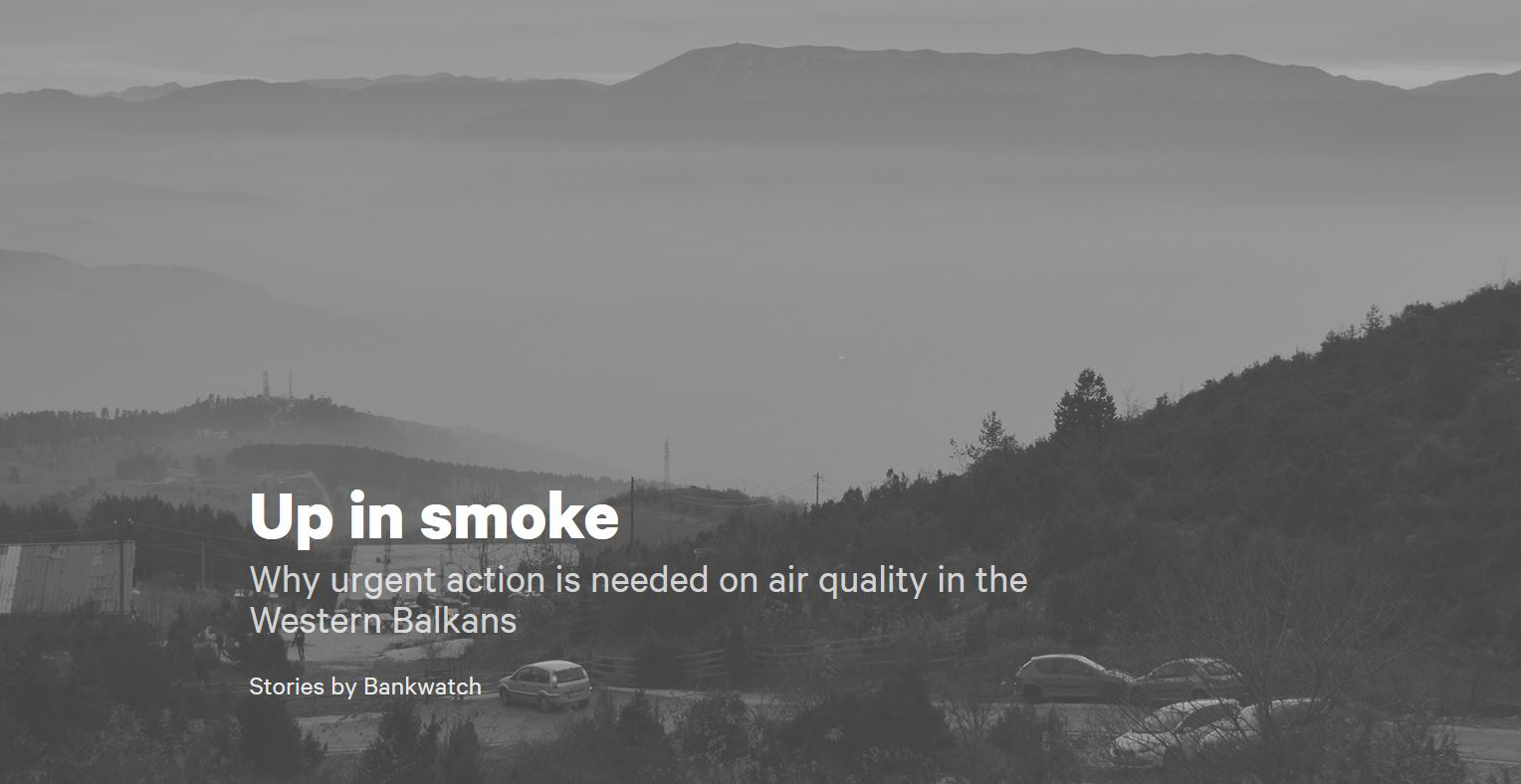Balkan protests show need for more EU action on air pollution – new analyses
Thousands of people took to the streets of Skopje, Pljevlja, Tuzla and other cities across the Western Balkans in December to demand action on chronic air pollution plaguing their communities. A new briefing shows that to a large degree these recurring smog incidents are the result of national authorities’ protracted inaction. Yet, air quality could be dramatically improved if two EU directives are transposed into the Energy Community Treaty, according to two legal analyses also released today.
29 February 2016

Thousands of people took to the streets of Skopje, Pljevlja, Tuzla and other cities across the Western Balkans in December to demand action on chronic air pollution plaguing their communities. A new briefing shows that to a large degree these recurring smog incidents are the result of national authorities’ protracted inaction. Yet, air quality could be dramatically improved if two EU directives are transposed into the Energy Community Treaty, according to two legal analyses also released today.
Every winter, towns across the Balkans face the same problem of heavily polluted air, and residents are increasingly concerned about the health implications.
The briefing paper, released today by CEE Bankwatch Network CEE Bankwatch Network and a group of environmental organisations in the region [1] explores the context of air pollution in Pljevlja, Tuzla, Sarajevo, Skopje and Tetovo following massive public protest across the region. According to the document, the main culprits vary by location but include thermal power plants, polluting industrial facilities, traffic, and poor enforcement of national air quality standards.
In Pljevlja, Montenegro, airborne dust pollution in has exceeded the allowed annual limit by more than five times every year since 2010. And yet, the Montenegrin government keeps blaming individual household stoves while failing to limit pollution from the lignite-fired power plant.
This winter has seen particularly bad air pollution in Sarajevo, Bosnia and Herzegovina. On 19-20 December levels of inhalable coarse particles known as PM10 reached 350 micrograms/m3 – that is, seven times the maximum allowed level of 50 micrograms/m3. Over the same days, PM10 concentration in Beijing, notorious for heavy smog, did not exceed 279 micrograms/m3. [2] And that was not all. On January 24, 2016, at 10pm, PM10 concentration spiked to the literally breathtaking level of 750 micrograms/m3.
“Such levels of air pollution are unacceptable, and they are the most blatant symptoms of a systemic energy and transport problem,” says Ioana Ciuta, Energy Co-ordinator at CEE Bankwatch Network. “Without stronger action from the EU to ensure that environmental legislation is transposed and enforced this situation looks set to continue.”
The briefing recommends adopting two directives into the Energy Community Treaty in order to improve their implementation in the region.
According to the two legal analyses, the EU’s Air Quality Directive and the Industrial Emissions Directive Chapter II can be vital pieces of environmental legislation for countries of the Western Balkans. Moreover, adapting them to fit the scope of the Energy Community Treaty is feasible and comes with great public health benefits.
The adoption of the Air Quality Directive would introduce, among others, the obligation to establish air quality plans in zones or agglomerations where levels of pollutants in ambient air have exceeded any limit value, so when the plan explores causes of declining air quality, it can aim its measures specifically at the core of the cause – for example the electricity generation sector.
Another legal instrument that could help abate air pollution is the implementation of Best Available Techniques (BAT) requirement under the Industrial Emissions Directive, both for existing facilities and for new ones.
“This provision would ensure the level playing field in energy generation in the EU and the Energy Community that we aspire to and prevent the danger of emissions leakage,” concluded Pippa Gallop, Research Co-ordinator at CEE Bankwatch Network.
The briefing can be found here:
http://stories.bankwatch.org/up-in-smoke
The legal analysis of the Industrial Emissions Directive Chapter II can be found here:
https://bankwatch.org/sites/default/files/Legal-analysis-application-ChapterII-IED-Energy-Community.pdf
The legal analysis of the Air Quality Directive can be found here:
https://bankwatch.org/sites/default/files/Prospects-for-implementing-air-quality-directives-Energy-Community.pdf
For more information contact:
Ioana Ciuta
Energy Co-ordinator, CEE Bankwatch Network
ioana.ciuta@bankwatch.org
Tel.: +40 724 020 281
Twitter: @unaltuser
Pippa Gallop
Research Co-ordinator, CEE Bankwatch Network
pippa.gallop@bankwatch.org
Notes to editors:
1. Zelena akcija/Friends of the Earth Croatia; Ekotim, Center for Ecology and Energy, and Center for Environment (Bosnia and Herzegovina), Green Home (Montenegro), Eko-Svest (Macedonia), and CEKOR (Serbia).
2. Converted from 163 US AQI figures, see https://www.airnow.gov/index.cfm?action=resources.aqi_conc_calc
Never miss an update
We expose the risks of international public finance and bring critical updates from the ground – straight to your inbox.
Theme: Energy & climate
Location: Serbia | Bosnia and Herzegovina | Montenegro
Project: Pljevlja II lignite power plant, Montenegro | Tuzla 7 lignite power plant, Bosnia and Herzegovina
Tags: Energy Community | air pollution | air quality | coal | combustion

